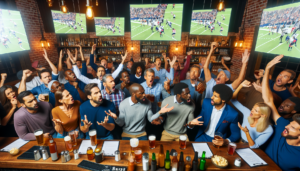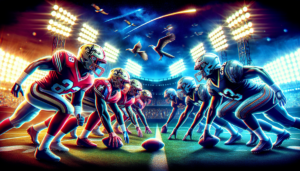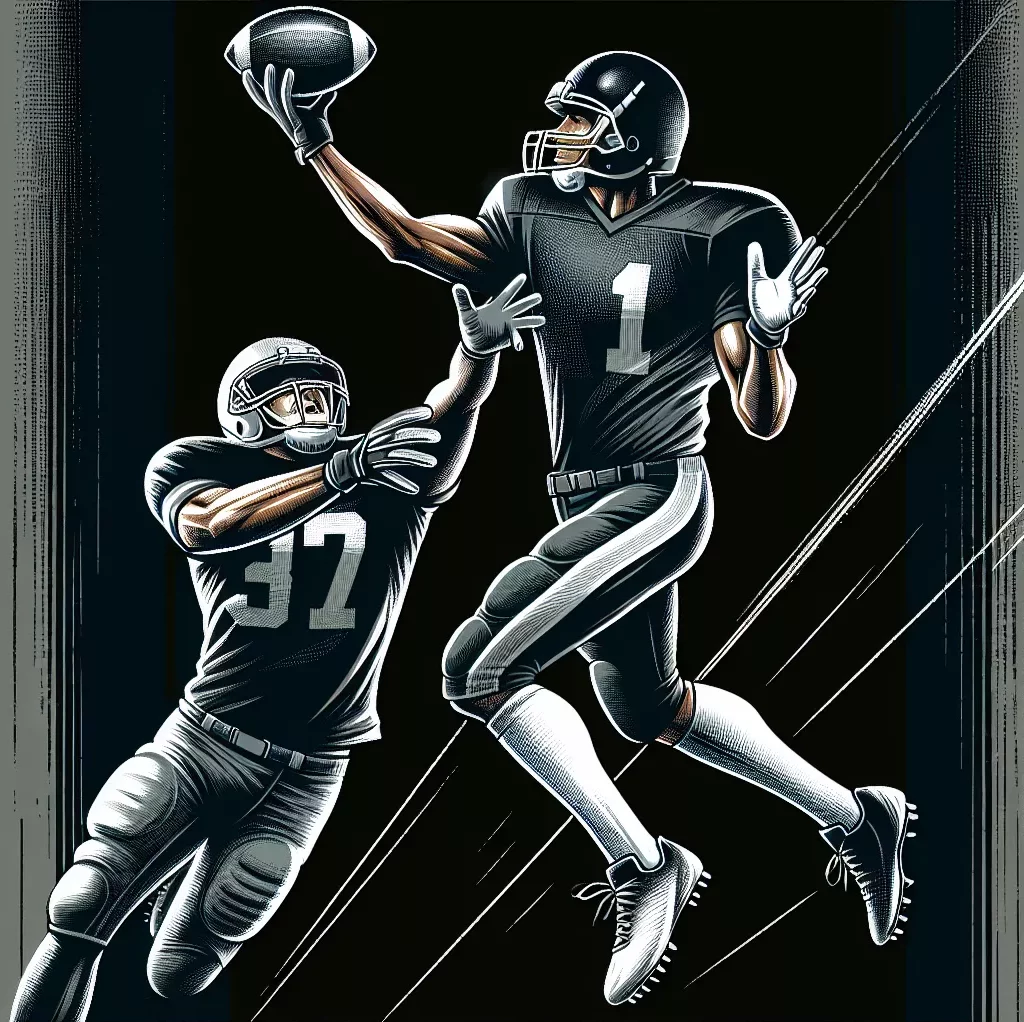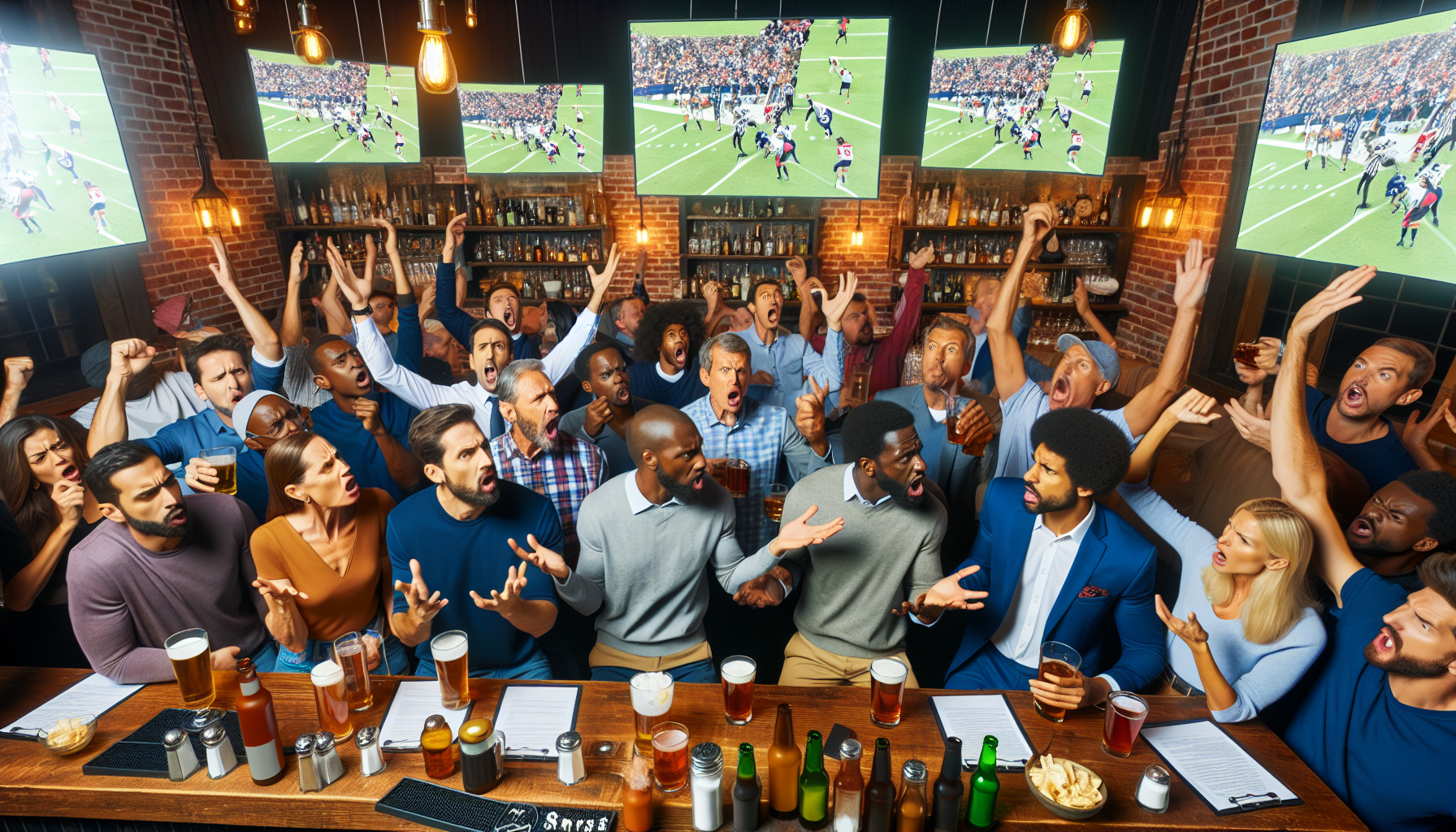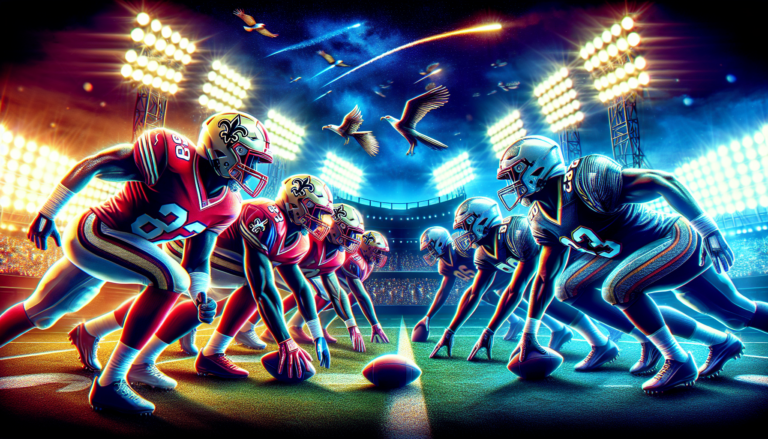Are you curious about the current hot topics in the world of sports? From heated discussions about the greatest basketball player of all time to controversial calls in soccer matches, there is no shortage of trending sports debates right now. Whether you’re a die-hard fan or simply enjoy keeping up with the latest sports news, exploring these discussions can provide endless hours of lively conversation and friendly debates with fellow enthusiasts. So, dive into the dynamic world of sports debates and join the conversation on the most talked-about topics in the sporting realm.
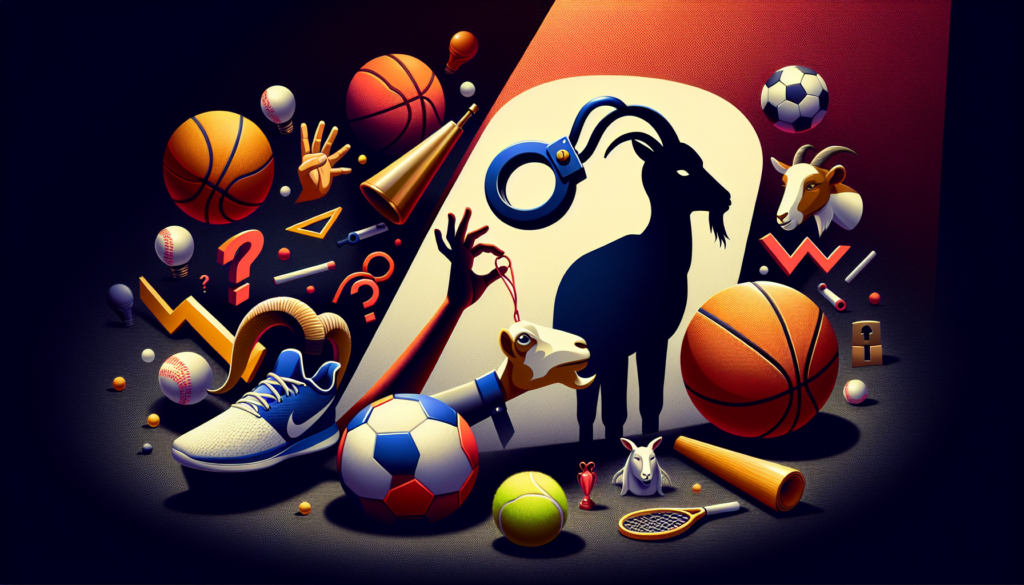
Head injuries in football
The long-term effects of repeated head trauma
Head injuries in football have become a major concern in recent years, with a growing body of research highlighting the long-term effects of repeated head trauma. Concussions, which are the most common type of head injury in football, can lead to a range of health issues including chronic traumatic encephalopathy (CTE), depression, and cognitive decline. CTE is a degenerative brain disease that has been found in many former football players, and it is believed to be caused by repeated blows to the head. As more players come forward with symptoms of CTE, there is a growing urgency to address the issue and find ways to prevent head injuries in football.
The effectiveness of current concussion protocols
In response to the growing concern over head injuries, football leagues and organizations have implemented concussion protocols aimed at identifying and managing concussions. These protocols typically involve the removal of a player from the game following a suspected head injury and a thorough evaluation by medical professionals. While these protocols have been a step in the right direction, there is still debate about their effectiveness. Critics argue that the current protocols may not be stringent enough to fully protect players and prevent long-term damage. More research is needed to evaluate the effectiveness of current concussion protocols and improve player safety.
Pros and cons of implementing stricter rules and penalties
To further reduce head injuries in football, some propose implementing stricter rules and penalties for dangerous plays that may lead to head trauma. This could include stricter enforcement of targeting penalties, which penalize players for leading with their helmet during a tackle. Supporters argue that stricter rules and penalties would help change the culture of the game and discourage players from engaging in risky behaviors that can result in head injuries. However, critics of stricter rules and penalties worry that it may fundamentally change the nature of the sport and make it less exciting for fans. Striking a balance between player safety and maintaining the integrity of the game is a challenge that needs careful consideration and discussion.
Performance-enhancing drugs in professional sports
The prevalence of doping in various sports
The use of performance-enhancing drugs, or doping, is a persistent issue in professional sports. Athletes are constantly seeking ways to gain a competitive edge, and some resort to using banned substances to enhance their performance. Doping scandals have rocked numerous sports, including cycling, track and field, and baseball. Despite efforts to combat doping through testing and punishment policies, it remains a challenge to completely eradicate the use of performance-enhancing drugs.
The impact of drug use on athletes’ health
The use of performance-enhancing drugs can have serious consequences for athletes’ health. These substances often have long-term health risks, including cardiovascular problems, liver damage, and hormone imbalances. The pursuit of excellence on the field can come at a high cost to athletes’ overall well-being. Furthermore, the pressure to perform and the temptation to use drugs in order to keep up with competitors can lead to a cycle of addiction and dependency.
The effectiveness of testing and punishment policies
Sports organizations and governing bodies have implemented testing and punishment policies to deter athletes from using performance-enhancing drugs. These policies involve regular drug testing and severe penalties, such as suspensions and disqualifications, for athletes who test positive. While these measures have helped to catch and punish some offenders, there are concerns about the efficacy of testing methods and the ability to stay ahead of new doping techniques. The constant evolution of doping methods means that testing policies must also evolve to effectively detect and deter drug use in sports.
Should college athletes be paid?
The financial disparities between college athletes and universities
One of the main arguments in favor of paying college athletes is the large financial disparities between athletes and their universities. College sports generate significant revenue through ticket sales, television contracts, and merchandise sales, yet the athletes themselves receive no direct financial compensation. Many argue that it is unfair for universities to profit off the talents and hard work of their athletes without providing them with a share of the revenue.
The ethical implications of profiting off amateur athletes
Another key aspect of the debate over paying college athletes is the ethical consideration of profiting off amateur athletes. College sports are often portrayed as a pure form of competition, where athletes play for the love of the game and the pride of representing their institution. The introduction of financial compensation raises concerns about the commercialization of college sports and the potential impact on the values and ideals associated with amateur athletics.
Potential solutions to compensate college athletes
While the question of whether college athletes should be paid is complex, there are potential solutions that could provide some form of compensation without compromising the amateur status of the athletes. These include allowing athletes to profit from their name, image, and likeness through sponsorships and endorsements, creating trust funds or insurance policies to provide financial support after graduation, or providing additional benefits such as improved healthcare and educational opportunities. Finding a fair and sustainable model for compensating college athletes requires careful consideration of the various factors involved.
Technology in sports officiating
The effectiveness of video assistant referees (VAR) in soccer
Technology has made its way into sports officiating, with video assistant referees (VAR) being introduced in soccer to assist in making accurate decisions during games. VAR allows referees to review incidents on a video monitor and correct any mistakes that may have been made. While VAR has been praised for its potential to eliminate human error and improve the fairness of the game, it has also faced criticism for disrupting the flow of the game and causing delays. Striking a balance between accuracy and maintaining the tempo of the game is a challenge that needs to be addressed.
The impact of automated strike zones in baseball
In baseball, the use of automated strike zones has been a topic of debate. Proponents argue that an automated strike zone could eliminate the inconsistencies and subjectivity of human umpires, leading to a more objective and fair game. Critics, however, argue that it takes away from the human element of the game and removes the need for umpires to make judgment calls. Implementing automated strike zones would require careful consideration of the impact on the game and the acceptance of new technology.
Debates over the use of instant replay in various sports
Instant replay has become a common feature in many sports, allowing officials to review questionable calls and make more accurate decisions. However, debates still exist regarding the frequency and scope of instant replay. Some argue that it slows down the pace of the game and disrupts the flow, while others maintain that it is necessary for ensuring fairness and getting crucial decisions right. Striking the right balance between using instant replay effectively and maintaining the integrity and excitement of the game is an ongoing challenge.
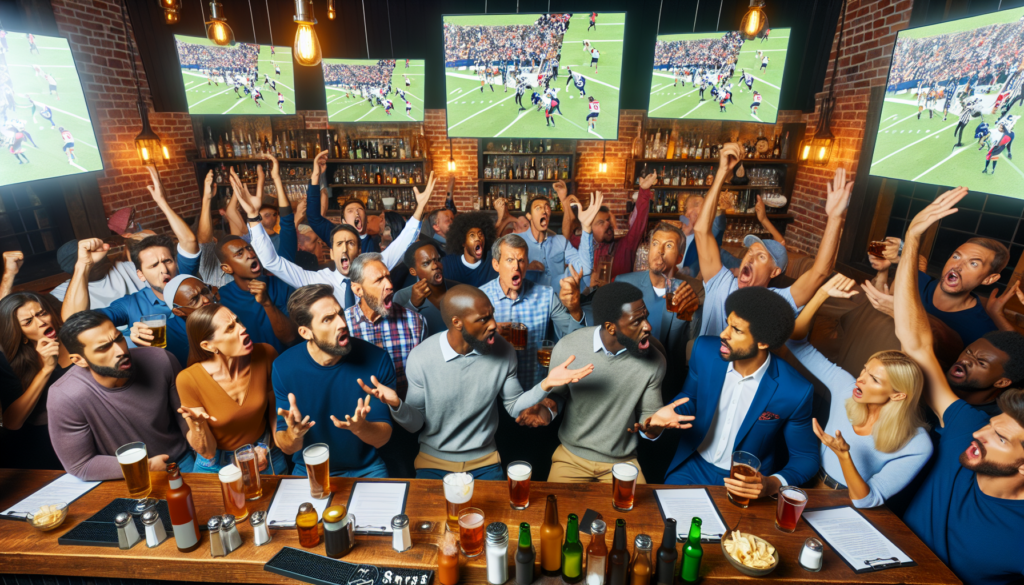
Women’s sports coverage
Gender inequality in media coverage and sponsorship deals
Women’s sports often receive less media coverage and sponsorship deals compared to their male counterparts. This gender imbalance perpetuates the narrative that women’s sports are less important or exciting, leading to a lack of exposure and opportunities for female athletes. For women’s sports to thrive, it is essential to address the gender inequality in media coverage and sponsorship, highlighting the accomplishments and stories of female athletes.
The popularity and demand of women’s sports
Contrary to the limited coverage they receive, women’s sports have a significant following and fan base. The interest and demand for women’s sports are growing, often driven by the success and excellence of female athletes. The popularity of events like the Women’s World Cup and the increasing viewership of women’s leagues demonstrate the untapped potential and marketability of women’s sports.
How to increase exposure and support for women’s athletics
Increasing exposure and support for women’s athletics requires a multi-faceted approach. It involves media outlets dedicating more airtime and coverage to women’s sports, sponsors investing in female athletes and leagues, and fans actively supporting and attending women’s sporting events. Building a more inclusive and equitable sports landscape for women will not only benefit female athletes but also provide role models for future generations and inspire more participation in sports.
Athlete activism and political statements
The role of athletes in advocating for social and political change
In recent years, athletes have increasingly used their platform to advocate for social and political change. From kneeling during the national anthem to speaking out against racial injustice, athletes have demonstrated their willingness to use their influence to make a difference. By engaging in activism and spreading awareness, athletes can spark conversations and challenge societal norms.
The potential consequences of mixing sports and activism
The intersection of sports and activism is not without its consequences. Athletes who choose to speak out on controversial issues may face backlash from fans, sponsors, and even team owners. The risk of alienation and negative consequences can deter some athletes from using their platform for activism. However, those who do engage in activism often prioritize making a positive impact over the potential repercussions.
The responsibilities of athletes as role models
As role models, athletes have the ability to shape public opinion and influence the younger generation. The decisions they make and the causes they support carry weight and can inspire others to get involved in social and political issues. However, it is important for athletes to recognize the responsibilities that come with their influence and ensure that their actions align with their values and the values of their sport.
The future of the Olympics
The financial burden and logistical challenges of hosting the Olympics
Hosting the Olympic Games is a significant undertaking, both financially and logistically. The cost of organizing the event can be astronomical, with countries investing large sums of money to build stadiums, infrastructure, and other facilities. Moreover, hosting the Olympics requires careful planning and coordination to ensure the smooth operation of the games, including security, transportation, and accommodation.
Proposals for a rotating or permanent host city
To alleviate the financial burden and logistical challenges, proposals for a rotating or permanent host city have been suggested. This would involve selecting a few cities or a single city to host the Olympics on a recurring basis, eliminating the need for new construction and reducing costs. While this approach could lead to more efficient and sustainable games, it also raises concerns about the exclusion of other cities and the loss of the cultural diversity that comes with a different host nation every four years.
The inclusion of new sports and the removal of traditional events
The Olympic Games are constantly evolving to stay relevant and appeal to a broad audience. New sports have been introduced, such as skateboarding and surfing, to attract a younger demographic and reflect changing trends in sports. However, the addition of new sports often prompts the removal of traditional events. This raises debates on the importance of preserving the historical and cultural significance of certain sports while embracing the need for innovation and inclusivity.
Esports: Are they real sports?
The growing popularity and legitimacy of competitive video gaming
Esports, or competitive video gaming, has seen a rapid rise in popularity and viewership worldwide. Professional video gamers compete in organized tournaments with significant prize money, sponsorships, and fan bases. The growth and professionalization of esports have led to questions about whether they should be classified as real sports.
Arguments for and against classifying esports as sports
Those in favor of classifying esports as sports argue that they require skill, strategy, and physical and mental dexterity, much like traditional sports. They highlight the level of dedication and training that professional gamers undergo to excel in their chosen game. However, skeptics argue that the physicality and athletic component of traditional sports are missing in esports, and therefore, they should be considered as a separate form of entertainment rather than a traditional sport.
The potential impact on traditional sports
The rise of esports has attracted the attention of younger generations and captured a significant portion of the entertainment market. This has led some to speculate about the potential impact on traditional sports. While traditional sports are unlikely to be replaced by esports, the growth of competitive video gaming has prompted organizations and sports leagues to explore partnerships and collaborations to tap into the esports market.
Transgender athletes in women’s sports
The fairness and inclusivity of allowing transgender women to compete in women’s sports
The inclusion of transgender women in women’s sports has been a subject of debate regarding fairness and inclusivity. Transgender women who have gone through hormone therapy argue that their hormone levels are consistent with those of cisgender women, counteracting any potential advantages they may have from their previous biological sex. Advocates emphasize the importance of inclusivity and equal opportunities for all athletes, irrespective of their gender identity.
The potential advantages or disadvantages of hormonal therapy
While hormone therapy can help to align transgender women’s hormone levels with cisgender women, there is ongoing discussion regarding its potential impact on physical performance. Some argue that transgender women may retain certain physiological advantages from their previous biological sex, such as bone density or muscle mass, even after hormone therapy. Balancing fairness and inclusivity while acknowledging potential advantages and disadvantages is essential in creating a level playing field for all athletes.
Debates over eligibility criteria and policies
Creating eligibility criteria and policies that are fair and inclusive for transgender athletes is an ongoing challenge. The International Olympic Committee and other sports organizations are working to develop guidelines that take into account transgender athletes’ rights while maintaining competitive fairness. Striking a balance that respects athletes’ gender identities without compromising the integrity of women’s sports requires careful consideration and collaboration between sports governing bodies and transgender advocacy groups.
Youth sports specialization
The increasing prevalence of young athletes specializing in a single sport
In recent years, there has been a growing trend of young athletes specializing in a single sport at a young age. The pressure to excel and secure scholarships or professional contracts has led many parents and athletes to focus on a single sport, often at the expense of participating in multiple sports or pursuing other interests. This early specialization raises concerns about the physical and psychological well-being of young athletes.
The potential risks of overuse injuries and burnout
Specializing in a single sport at a young age can increase the risk of overuse injuries and burnout. Repetitive stress on the same body parts can lead to chronic injuries, and the intense pressure and focus on one sport can contribute to mental and emotional burnout. Balancing academic success, social development, and physical well-being is crucial to prevent the negative consequences of early specialization.
The benefits and drawbacks of early specialization
While early specialization can provide certain advantages, such as increased skill development and the potential for scholarships or professional opportunities, it also has drawbacks. Participating in multiple sports exposes young athletes to a wider range of skills, develops overall athleticism, and reduces the risk of overuse injuries. It is important to strike a balance between early specialization and diversification to ensure young athletes have a well-rounded and enjoyable sports experience.
